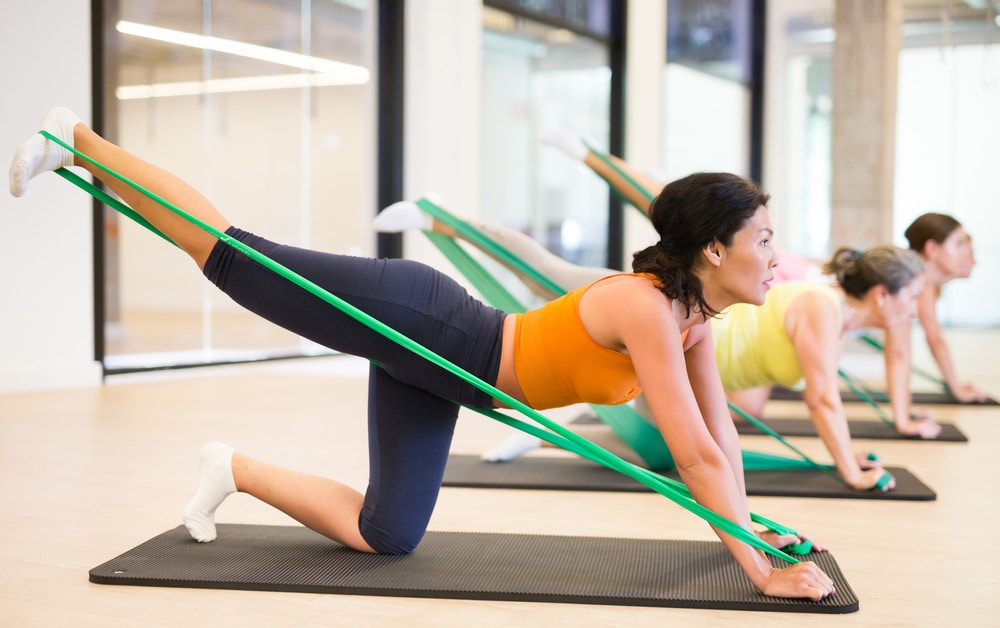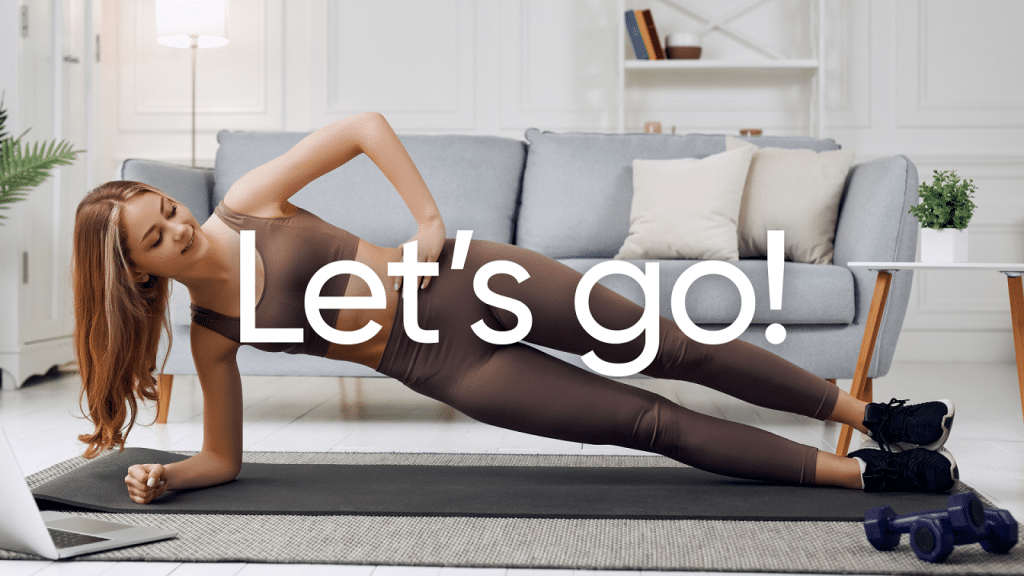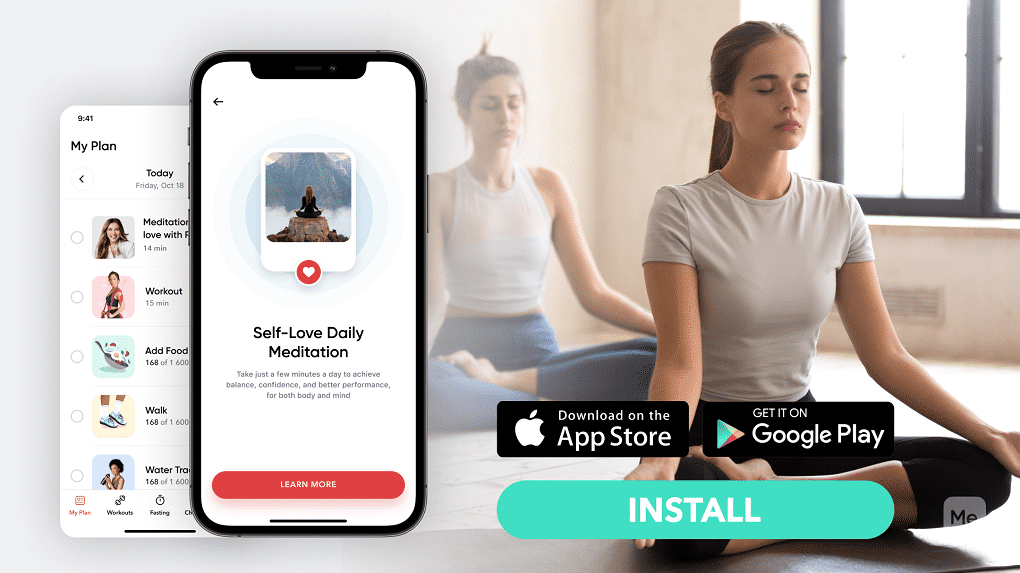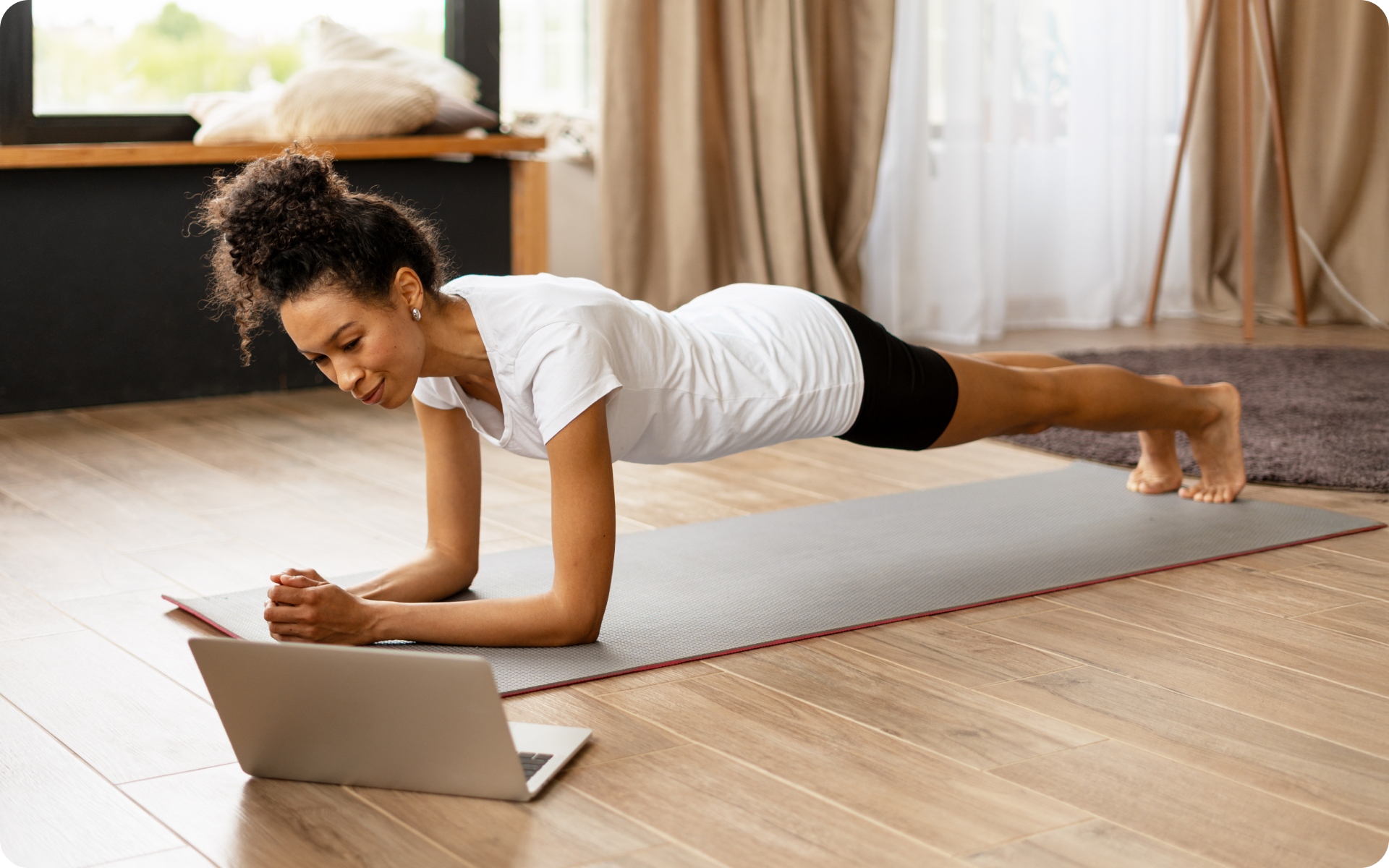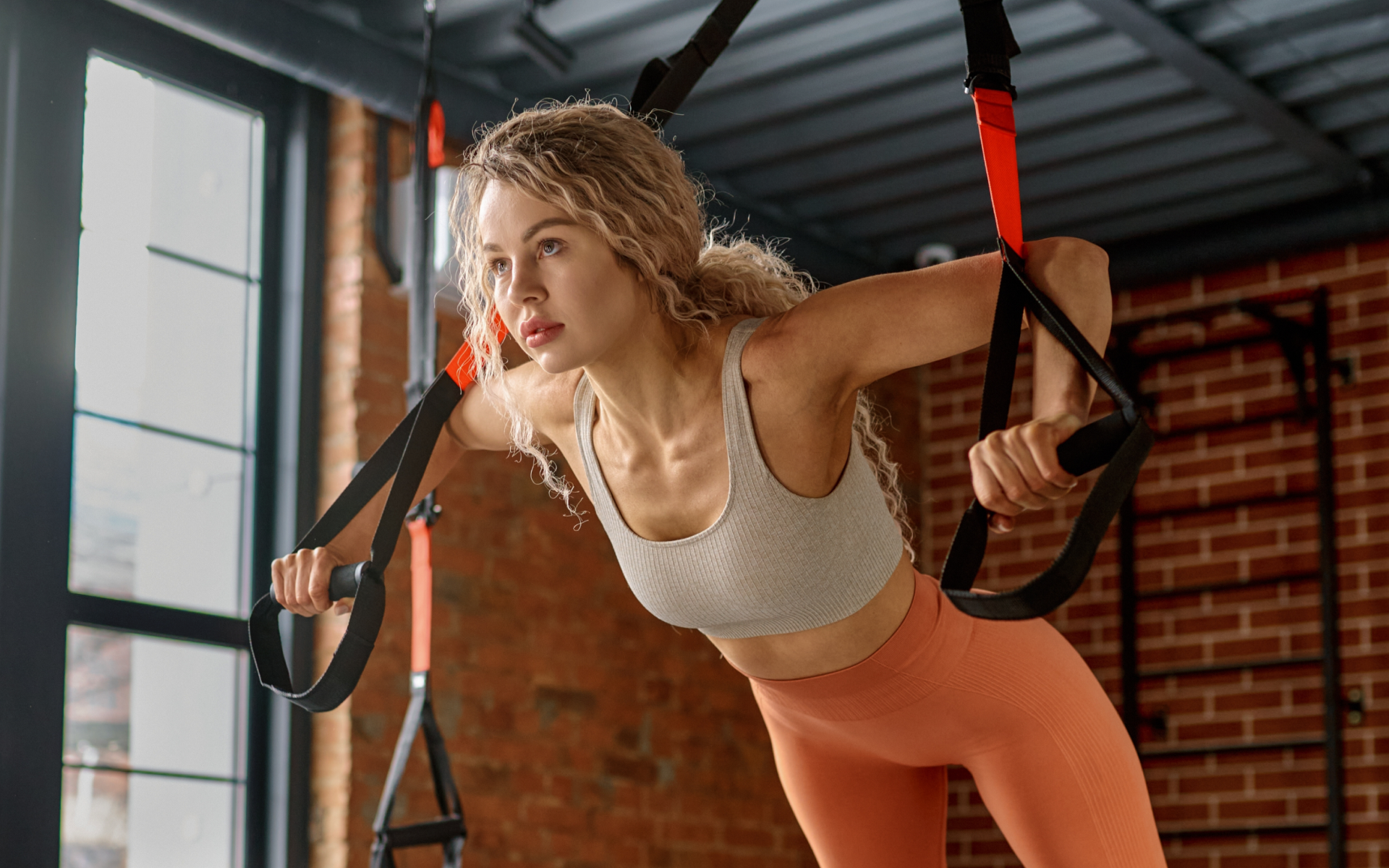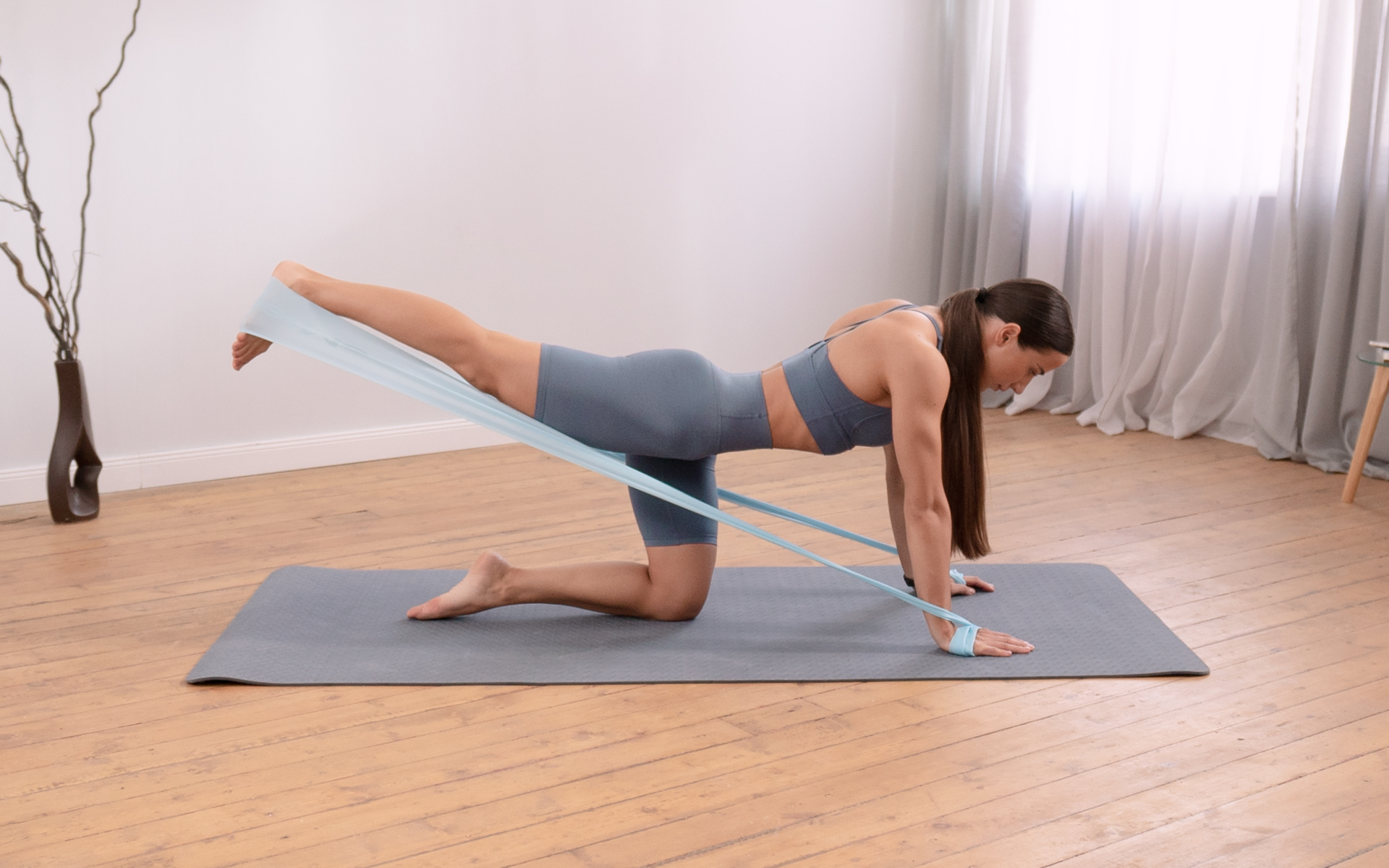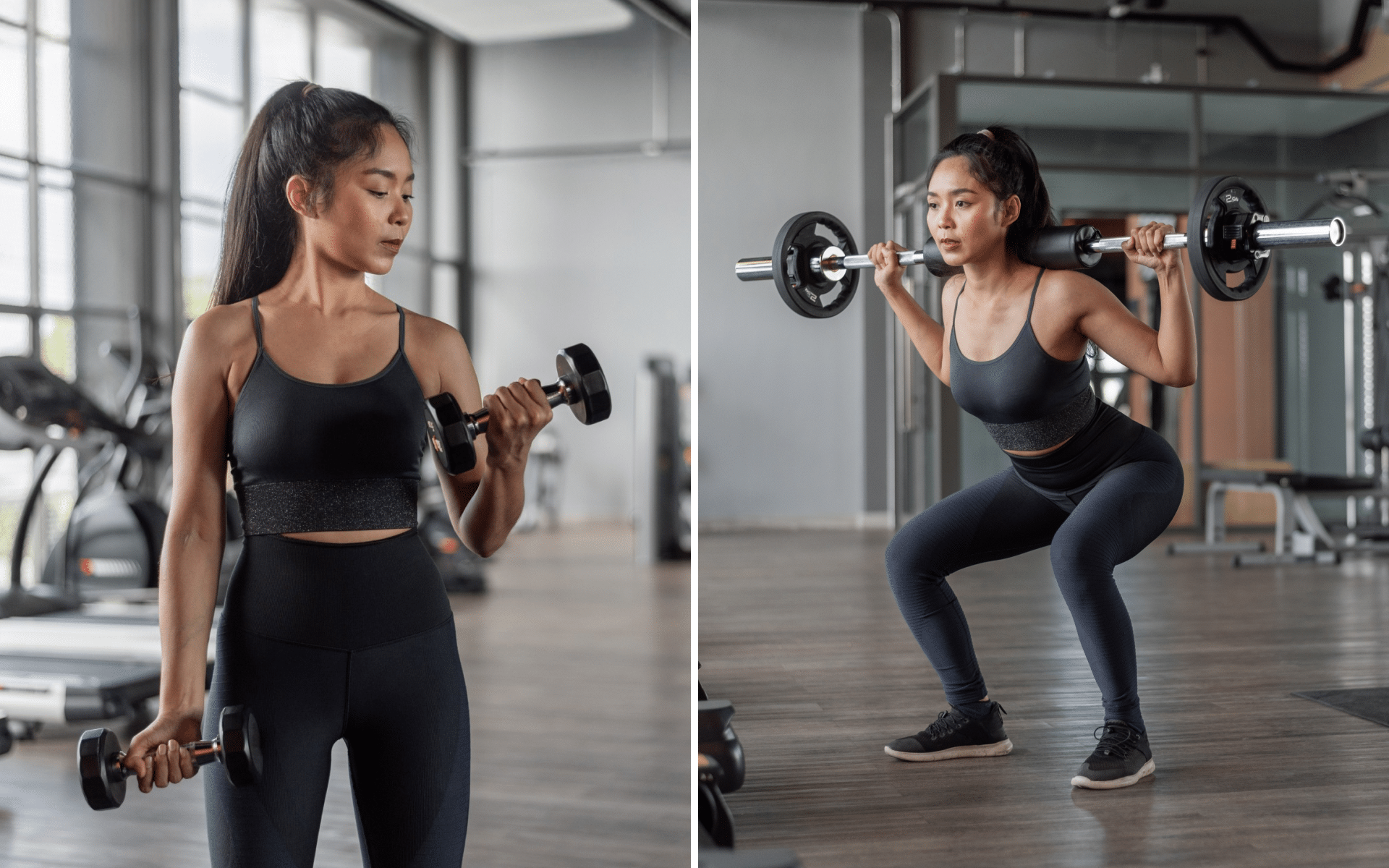When designing your workout routine, you are advised to include a variety. Fitness experts argue that a mix of everything is beneficial in challenging your body muscles to attain your body goals. By variety, these fitness gurus mean adding compound exercises, stretches, dynamic moves, or isometric exercises. Isometrics exercises are very popular in most regimes due to their power in building muscular strength and endurance. Take a look at some isometrics exercise you can try at home.
Get your personalized
meal plan!
What Are Isometric Exercises?
Isometric exercises refer to movements that contract your muscles without causing any movement in the surrounding joints (1), (4). The constant tension caused by these moves has been linked to improved muscle endurance and support for dynamic exercises (1).
It is worth noting that there are two types of muscle contraction, namely isotonic and isometric. According to Medical News Today, isotonic contractions occur when muscles become longer or shorter against resistance, but tension remains the same (1).
On the other hand, isometric contractions occur when tension increases, but the muscle remains at a constant length (1). Most isotonic contractions are found in strength-building exercises that involve eccentric and concentric movements (1).
Benefits Of Isometric Exercises
If you look at most exercise regimes, you will notice that most if not all include at least two or three isometric exercises. This is because these movements have a long list of benefits. Some of the benefits associated with performing isometric exercises include (1), (2):
- Activating many muscle fibers at once.
- Correct movements for individuals with injuries or medical conditions that restrict movement.
- Reduced blood pressure.
- Improved muscle stability and extended periods of holding weights.
- Pain relief for neck pain, knee osteoarthritis, and lower back pain.
- Less practice with good form required as compared to dynamic exercises.
Read More: What Is An Isometric Exercise: Static Strength Training For The Win
Examples Of Isometric Exercises
Isometric exercises are straightforward when compared to other movements like dynamic or compound exercises. Additionally, you can perform them anywhere to reap their benefits. Here are a few isometric exercises to try at home to challenge your body and gain new levels of strength:
High Plank (1)
This is a perfect example of an isometric exercise because it engages your core and back muscles without moving others.
Muscles targeted: Core, glutes, quads, shoulders, chest, and back
How to:
- Start on your fours, then slowly stretch your legs behind you so that your body is in the pushup position. It means your body must form a straight line from the head to the toes.
- Be sure to straighten your back and press by broadening across your chest.
- Tighten your core, breathe deeply, and hold this stance for 30 to 45 seconds.
Key Pointers: Avoid sinking your hips too low or lifting your bum too high. It distracts your form, and this can injure your back.
Wall Sit (1)
This simple exercise is mainly performed by individuals seeking to improve muscle endurance in the thighs without straining their lower back muscles.
Muscles targeted: Thighs, quads, glutes, and hamstrings
How to:
- Start in a standing position at least 2 feet away from a wall. Position your legs at shoulder-width distance.
- Slowly lower your body into a squat so that your back rests flat and straight against the wall.
- Bend your knees at a 90-degree angle into a squatting position and keep the tension in the core.
- Stay in this position for a minute or as long as you can without disrupting the proper form or experiencing discomfort or pain.
Glute Bridge (3)
The glute bridge may not be new to many as it is often incorporated in most workout regimes. It is associated with many benefits, including toning your butt and core.
Muscle targeted: Glutes
How to:
- Lie on a yoga mat on your back and bend your knees. Be sure to press your feet firmly on the floor and rest your hands on the sides, with the palms facing in.
- Tighten your abdominal muscles and slowly lift your hips off the ground towards the ceiling. Use your arms for stability.
- Pause at the top of the movement for a few seconds while keeping your abs active, then slowly release.
- Repeat.
Key Pointers: Do not lift your upper back off the floor. Similarly, aim to lift your hips off the floor until your torso forms a straight line.
Whether you’re looking to simply pep up your fitness routine, jazz up your diet with mouth-watering low-calorie recipes or want to get your act together and significantly drop that number on your scale – BetterMe app has got you covered! Improve your body and revamp your life with us!
Dead Hang
You will find this exercise in workout routines of individuals looking to tone their upper body, particularly their shoulders. It is a practical shoulder toning exercise.
Muscles targeted: Delts and upper body
How to:
- Grab a pull-up bar with your hands positioned at shoulder-width distance.
- Keep your body straight, cross your feet behind, and slowly lift them off the floor so that your body is hanging in the air.
- Maintain the stance without making any sudden movement for as long as possible.
Isometric Squat
An isometric squat is one of the most effective isometrics exercises for legs. It is a variation of the standard squat that builds endurance in the leg muscles (1).
How to:
- Stand upright and position your legs at a shoulder-width distance.
- Bend your knees and push your hips backward as if you are sitting. Do not arch your back.
- Lower yourself as far as you can without any discomfort or until your thighs are parallel to the floor.
- Once in a squatting position, move your arms forward to help with balance.
- Hold this position for a few seconds, release, and repeat.
Key Pointers: Try to breathe normally during the movement and look forward. Similarly, keep your neck and spine neutral.
Forearm/Elbow Plank (4)
This is a variation of the regular plank that, as the name suggests, involves resting on your forearms.
Muscles targeted: Abs
How to:
- Start on your fours, and then stretch your legs behind so that you rest on your toes.
- Rest your forearms on the floor and position them at a shoulder-width distance so that you are resting on your elbows and not your palms.
- Keep your spine in a straight line and tighten your abdominal muscles as much as possible. Remember to breathe normally and keep shoulders, knees, hips, and ankles aligned.
- Hold this position for 30 to 60 seconds before dropping to the floor.
- Repeat two to three times.
Key Pointers: Avoid letting your bum hike too high or fall because it is injurious. Similarly, perform the exercise on a soft surface, preferably a yoga mat, to avoid injuring your forearms.
Read More: Stress Relief Yoga: Calming Your Mind With This Ancient Technique
Dumbbell Curls
As the name implies, you will require a set of dumbbells to perform these curls. The isolation exercise is perfect for the muscles on the front part of your arms, better known as the biceps.
Muscles targeted: Biceps
How to:
- Start in a standing stance when holding a pair of dumbbells at arm’s length and by your sides. Make sure your palms are facing forward.
- Tuck your elbows in, keep your back straight, lock your upper arms in place, and then slowly curl the weights until your forearms are parallel to the floor.
- Hold for as long as you can.
Side Plank
If you want a more challenging plank variation, then try the side plank. It mainly targets the muscles along the side of your core, known as the obliques (1). So, this exercise is perfect for fighting love handles or muffin tops.
Muscles targeted: Obliques, core, hip abductors, glutes, shoulder, and spinal stabilizers.
How to:
- Lie on your left side and straighten your legs. Keep your hips, knees, and feet stacked on each other.
- Bend your left elbow and position the forearm on the floor just underneath the shoulder.
- Press into your left forearm to lift your upper body and hips stacked on each other off the ground. Remember to engage your core and keep your body straight from the head to the heels.
- Position your right arm on the forearm, lift it straight towards the ceiling, or keep it by your side.
- Breathe deeply and hold this stance for 20 or more seconds before switching sides.
Key Pointers: The side plank is a bit more challenging than the high plank, which is why it is advisable to start with the high plank. Again, for added intensity in this plank, try performing it while the lower arm is straight.
Calf Raises With A Hold
Exercising your calf muscles is essential due to their high contribution to daily activities like walking and running. But, unfortunately, most people often forget to exercise these muscles. But no more.
The calf raise and hold is one of the best exercises for your lower body. It is also one of the best isometrics for those who can’t exercise due to its simplicity.
Muscles targeted: Calves
How to:
- Stand at least 2 feet away from a wall, your feet positioned at hip-width distance.
- Place your hands on your hips and push into the balls of your feet, lifting your heels off the floor. Rest lightly on the wall if you need extra support.
- Hold the stretch for 20 to 30 seconds before releasing and switching legs.
- Repeat and perform at least two to three reps.
Key Pointers: Lift as high as you can without experiencing pain and remember to keep your knees extended but not locked.
Bent Over Press Against A Wall
A bent-over press against a wall is one of the best representations of the working theory of an isometric exercise. By pushing up against a wall, your body muscles generate force and tension without any movement through your joints (1).
It is a simple exercise to pave the way for more challenging exercises such as pushups. Additionally, the exercise effectively tones your upper body, primarily your shoulders.
Muscles targeted: Shoulders
How to:
- Start in a low lunge position. Step your right foot forward and bend your hips. Be sure to keep your hips low.
- Place your hands on the wall at about your chest level.
- Lean into the wall and then push. Note that the exercise only targets your shoulders, depending on how low you bend. If you stay upright throughout the exercise, it will target your chest.
- Hold for a minute or so, release, and switch sides.
Key Pointers: Try to breathe normally throughout the exercise. Similarly, relax to avoid tension building up in parts of your face, such as your jaw.
If you struggle to even flirt with the idea of giving up your favorite foods or working out till your legs give way – BetterMe app is here to breathe a fresh perspective into the way you view the weight loss process! Check out the app and experience the fun side of fitness and dieting with BetterMe!
What To Know About Isometrics Exercises
You are bound to get the most from isometric exercises if you pay attention to specific details. These include (1), (4):
The Form
You are always advised to focus on the proper form of each exercise to minimize injury risk. Therefore, always learn the form before adding the exercise to your routine.
-
Contraction Of Muscles
One thing about isometric exercises is that they contract your muscles without causing any movement in the surrounding joints. So, please pay attention to how your muscles are contracting to better activate them for increased strength and endurance.
-
Breath
It is common to forget the proper breathing techniques when performing an isometric exercise. Some people hold their breath while others forget to breathe deeply. Be sure to breathe as instructed throughout the exercise.
The Bottom Line
Isometrics exercise refers to activities that contract your muscles without causing any movement in the nearby joints. They are a great addition to your workout routine as they introduce variety and build muscular strength and endurance.
These exercises are ideal for individuals who are looking for low-impact exercises. Some isometric exercises to consider are high planks, glute bridges, wall sits, side planks, dumbbell curls, calf raises with a hold, and forearm planks.
Remember to talk to your doctor first before making any changes to your workout plan. Similarly, remember to adjust the exercises to your current fitness level. Good luck!
DISCLAIMER:
This article is intended for general informational purposes only and does not serve to address individual circumstances. It is not a substitute for professional advice or help and should not be relied on for making any kind of decision-making. Any action taken as a direct or indirect result of the information in this article is entirely at your own risk and is your sole responsibility.
BetterMe, its content staff, and its medical advisors accept no responsibility for inaccuracies, errors, misstatements, inconsistencies, or omissions and specifically disclaim any liability, loss or risk, personal, professional or otherwise, which may be incurred as a consequence, directly or indirectly, of the use and/or application of any content.
You should always seek the advice of your physician or other qualified health provider with any questions you may have regarding a medical condition or your specific situation. Never disregard professional medical advice or delay seeking it because of BetterMe content. If you suspect or think you may have a medical emergency, call your doctor.
SOURCES:
- 5 isometric exercises for people to try (2020, medicalnewstoday.com)
- Are isometric exercises a good way to build strength? (2020, mayoclinic.org)
- Isometric training and long-term adaptations: Effects of muscle length, intensity, and intent: A systematic review (2019, pubmed.ncbi.nlm.nih.gov)
- Medical Definition of Isometric exercise (2021, medicinenet.com)
